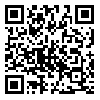Thu, Sep 11, 2025
[Archive]
Volume 19, Issue 3 (September 2023)
IJEEE 2023, 19(3): 102-114 |
Back to browse issues page
Download citation:
BibTeX | RIS | EndNote | Medlars | ProCite | Reference Manager | RefWorks
Send citation to:



BibTeX | RIS | EndNote | Medlars | ProCite | Reference Manager | RefWorks
Send citation to:
ATTOU N, Zidi S, Hadjeri S, Khatir M. Peak Management in Grid-Connected Microgrid Combining Battery Storage and DSM Systems. IJEEE 2023; 19 (3) :102-114
URL: http://ijeee.iust.ac.ir/article-1-2778-en.html
URL: http://ijeee.iust.ac.ir/article-1-2778-en.html
Abstract: (2044 Views)
Demand-side management has become a viable solution to meet the needs of the power system and consumers in the past decades due to the problems of power imbalance and peak demand on the grid. This study focused on an improved decision tree-based algorithm to cover off-peak hours and reduce or shift peak load in a grid-connected microgrid using a battery energy storage system (BESS), and a demand response scheme. The main objective is to provide an efficient and optimal management strategy to mitigate peak demand, reduce the electricity price, and replace expensive reserve generation units. The developed algorithm is evaluated with two scenarios to see the behavior of the management system throughout the day, taking into account the different types of days (weekends and working days), the random profile of the users' demand, and the variation of the energy price (EP) on the grid. The simulation results allowed us to reduce the daily consumption by about 30% to 40% and to fill up to 12% to 15% of the off-peak hours with maximum use of renewable energies, demonstrating the control system's performance in smoothing the load curve.
Keywords: Battery Energy Storage System, Demand-Side Management, Load Shifting, Microgrid Peak Shaving, Valley Filling.
Type of Study: Research Paper |
Subject:
Load Management
Received: 2023/01/14 | Revised: 2023/11/25 | Accepted: 2023/09/13
Received: 2023/01/14 | Revised: 2023/11/25 | Accepted: 2023/09/13
| Rights and permissions | |
 |
This work is licensed under a Creative Commons Attribution-NonCommercial 4.0 International License. |








